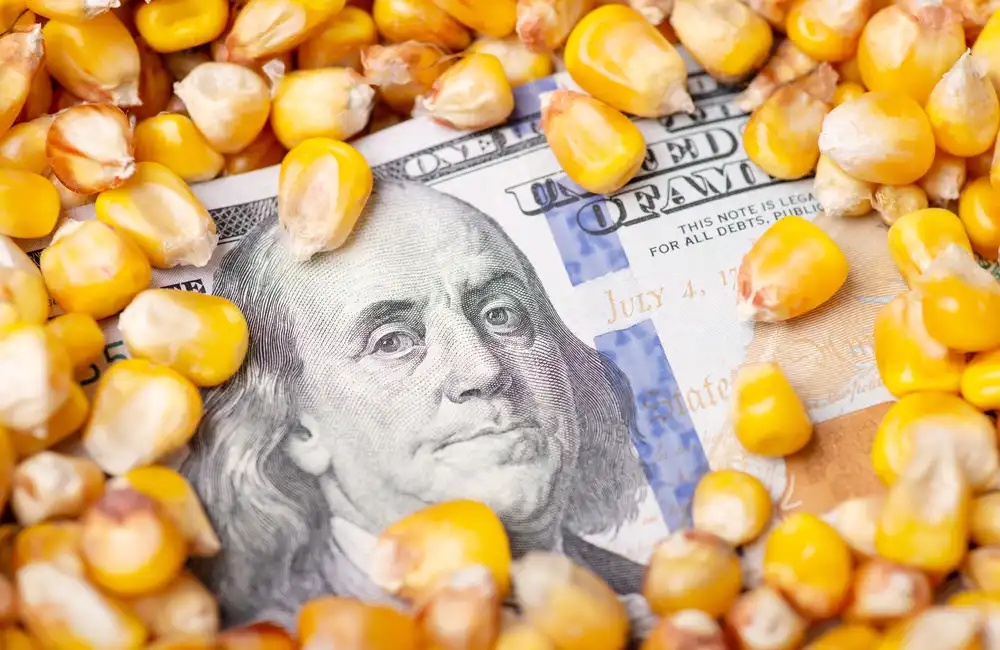The grain markets await information from the upcoming U.S. planting reports, while trade negotiations contribute to positive market sentiment.
Funds maintained their bullish positions in Chicago corn and soybean futures this week, unchanged, as positive sentiments from U.S.-China trade talks supported grain market strength. Market watchers and traders focused on the forthcoming USDA planting reports to assess market dynamics related to supply and demand.
The Chicago Board of Trade (CBOT) Grain Futures
The Chicago Board of Trade (CBOT) corn and soybean futures continue to attract significant speculative investor long positions. The latest report from the Commodity Futures Trading Commission (CFTC) confirmed that funds maintained net long positions across 141,288 corn contracts and 108,569 soybean contracts as of Tuesday. The number of corn contracts decreased by 2,000 while traders maintained their current soybean positions indicating cautious market optimism (CFTC). Investment experts see funds making strategic moves to capitalise on projected global demand recovery while dealing with ongoing short-term supply instability.
USDA's Annual Prospective Plantings Report
The grain markets anticipate the USDA's annual Prospective Plantings report, as it represents a crucial indicator for the commodity sector. The report will be released on Friday, revealing farmers’ planting plans for major crops like corn and soybeans. The release of this data historically triggers major market swings because it reveals new information on how much acreage U.S. farmers intend to dedicate to different crops and their total production capabilities. Unexpected differences from market forecasts will lead to swift adjustments in futures contract pricing.
U.S.-China Trade Relations and Grain Market Impact
Market cautious optimism grows as trade tensions between the U.S. and China seem to lessen. Representatives from both countries have reportedly advanced their agricultural trade negotiations which generates positive expectations for grain market imports. The agreement by China to buy U.S. agricultural products such as soybeans has driven recent price increases but actual purchasing levels continue to be closely examined. Market participants seek confirmation that export demand will remain strong in the coming months despite the threat of Brazil’s record-breaking soybean harvest.
Managing Market Risks Amid Weather and Geopolitical Factors
Fund managers exercise caution while evaluating numerous risk factors such as unpredictable weather conditions and changing geopolitical situations. Midwest weather predictions indicate higher-than-usual rainfall, which may delay corn planting schedules in some regions. Sarah Knight from Cropland Strategies stated that significant delays would probably lead to increased prices in the immediate future. Knight emphasised that monitoring changes in short-term export demand and domestic consumption trends represents a vital component of risk management within today's market framework.
The Role of South American Harvests in Global Grain Markets
The future of international grain markets remains dependent on South American harvest developments. The estimated record soybean production in Brazil threatens to weaken the export competitiveness of U.S. producers. The regional supply has diminished because of Argentina's dry weather conditions which may counterbalance Brazil's exceptional yield. Experts maintain that upcoming South American events will significantly influence worldwide supply discussions over the next few weeks.
Implications for UK Investors
UK investors and agricultural commodity analysts should remain vigilant because market conditions will change with new USDA planting reports and ongoing trade agreement developments. Updated supply-demand projections can trigger position changes which will probably lead to trading opportunities. The progress of trade discussions and export information serves as indicators for UK investors to assess U.S. grain market competitiveness in the global landscape.
UK investors who remain aware of these market changes will be able to balance portfolio risk and take advantage of agricultural market opportunities.




















